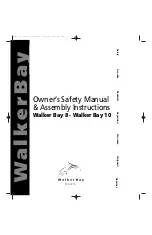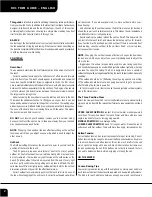
on so the movement and telegraphing is not so
easy for the other boat to see. One thing about
this is the call of “they match” meaning they’re
jibing also—this automatically becomes tricker
because the helm must turn the boat faster,
landing at a higher angle than usual. The crew
know to hit the rail and hike and the spinnaker is
going to be over-sheeted, waiting for the call to
work down a few degrees.
•
“Matching jibe” or “Symo”
will be used when all
crew are ready to jibe as the boat in front begins
to jibe. Now this isn’t everyone as you still need
the group responsible for speed working hard to
have the boat at 100 percent so you can use that
to jump them. This jibe will be at a faster turn rate
and a higher landing angle…the rest is just like “No
look” and “They match.”
•
“Surfing”
might mean you have a two-phase jibe,
as usually the wind is up and you are looking for
the right wave. When you find it, you make the
first part of the turn quickly to unload the sails.
You then want to hold the surf while the rotation
happens, then pop the bow up and get ripping
or surfing on the new jibe. Not one jibe in these
conditions is usually the same, and the Helm will
have to adapt to every situation and make the
subtle changes in steering needed to raise the level
of success.
•
1. Helm
•
Execute smooth steering.
•
Work on turn rate vs. tactical situation or style of jibe.
2. Tactician
•
Communicate type of jibe and countdown time
into the jibe.
•
Ease runner off or bring on new runner. In light air,
do both.
3. Main
•
Jibe main from the winch and then control the
ease so the battens flip through.
•
Set up winches if trimming off leeward winch.
4. Trimmer
•
Control the ease of the spinnaker sheet to the
headstay and then cut (release) the sheet.
•
Turn around and help to bounce the new sheet
around, then load new sheet on the winch.
•
Call the angle out of the jibe and work on helping
get to speed and angle again with Helm.
5. Trim #2
•
Tail in new sheet, pull hard, and get ready, and with
Trimmer do final bounce—sometimes together,
sometimes leap frogging the other person to keep
the line speed up, then doing a joint bounce and
onto the winch.
•
Get winch handle, ready to grind for Trimmer
•
Reload lazy sheet, ready for next jibe.
6. Pit
•
Jibe the jib, pulling it in tight before the spinnaker is
rotated around the headstay. Then ease sheet and
trim jib in on new tack. Don’t pull it too soon as it
will need to remain loose until the spinnaker sheet
is eased and the boat is up to speed.
7. Mast
•
Either bounce the chute around, standing on the
deck, or pull from within the cockpit.
8. Bow
•
Check everything on the bow is clear.
•
Bounces spin sheet on deck with Mast.
9. Floater
•
Jibe runners with Tactician if in aft spot
•
If forward, take care of the van.
Drops
Planning your entry into the bottom mark takes
place on the last third of the run as you figure out
which mark you want and how you plan to get there.
Remember, there is a big risk reward as it’s not only
about the approach and set-up for the mark but also
leaving it and making a good exit.
Содержание IC37
Страница 1: ...Sailing Manual 1 0...
Страница 2: ......
Страница 18: ...12 Knot Configuration Light Air Configuration...
Страница 19: ...Drifting Configuration...
Страница 20: ...northsails com...




































